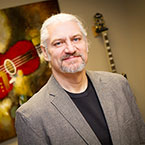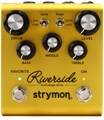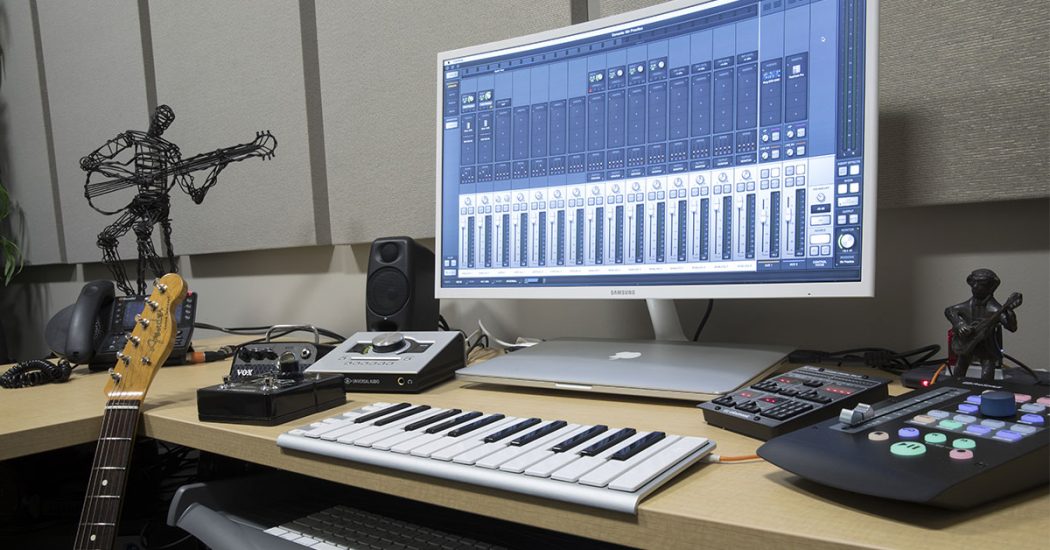
Like many guitarists out there, I have limited time to dig in and practice my instrument — life is busy! I want to ensure that when I do have time, I can get to work and make progress. To that end, I make use of technology where I can to make things more efficient. Through a lot of experimenting, I’ve put together a compact desktop practice rig that gives me everything I need to practice my axe — it’s even portable if I need to take it on the road.
Let’s take a look at where I landed with my Ultimate Desktop Practice Rig. Keep in mind that this is what works for me. As the saying goes, your mileage may vary — there are a lot of solutions out there that will accomplish the same thing or that will provide you with capabilities I don’t need in my rig.
Practice Needs
To begin, I think it makes sense to put together a list of what you need your rig to do — what you work on in your practice sessions, and what the rig needs to provide — so that you can find the tools that will help you do that work. For me, the list includes:
- Metronome — I like a versatile metronome that can be programmed to provide different rhythms and that will store and recall settings. In particular, I like to set the metronome so it only clicks on 2 & 4, or sometimes on just one beat per measure, or sometimes an eighth note.
- Play along with backing tracks.
- Use lessons and courses with online YouTube videos or other resources, such as TrueFire, ArtistWorks, Peghead Nation, and many more.
- Slow down and loop audio files to make it easier to transcribe and learn songs and solos.
- Record my own loops and play along with them.
- Display sheet music and tabs.
- Access notation software for documenting ideas, licks, and transcriptions.
- Plug my guitar in with no latency, maybe add a few effects, so I can get a nice tone while practicing.
- Record ideas and licks as audio files.
- Monitor through studio monitors or with headphones for “silent” practice.
- Compact enough to leave set up, so I can get right to work without having to connect and configure gear.
The Rig
The desktop practice rig I assembled has just a few must-have components. We’ll start with the list of hardware essentials, then look at some useful additions.
- Apple MacBook Pro — This laptop is the centerpiece of my creative life, so it makes sense to also make it the centerpiece of my desktop practice rig. It runs all the software I need and has connectivity for everything I need to hook up. I’m an Apple guy, so a MacBook Pro is where my rig ended up. You might choose a Windows machine or even work from an iPad or other tablet. When I’m practicing at home, the laptop is connected to a large external HDMI monitor, which is great for displaying sheet music and tabs, and notation apps when I’m transcribing.
- Universal Audio Apollo Twin MkII — With the Apollo Twin’s two inputs, I can route my guitar in one, either direct into the interface’s instrument-level input or through an external amp with a speaker-emulated output. The other input can host another source, such as my iPad, which I often use as a metronome. The Apollo Twin has stereo outs that connect to my monitors, and also a stereo headphone jack on the front to facilitate silent practice. My MacBook Pro does have audio in and headphone out jacks, and built-in speakers, but I find the sound is so much better using the Apollo Twin. And even more important, as we’ll see below, I use the included UAD console to route and mix all my software audio apps and can also use it to add UAD amp emulation and effects plug-ins to my incoming guitar signal. Other interfaces and their control apps provide similar mixing/monitoring capabilities, but may not provide plug-in support.
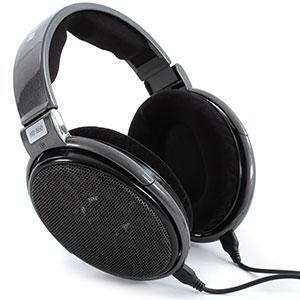 IK Multimedia iLoud Micro Monitors — I love these little iLoud Micro Monitors for desktop use. I have two sets, one in my home music room where I practice, and another in my office. They sound great, with amazing low end, and they’re tiny, so they don’t take up much room. You can even get a compact travel bag to take them on the road. In addition to practicing, I’ve used them to mix a number of tracks that came out sounding great.
IK Multimedia iLoud Micro Monitors — I love these little iLoud Micro Monitors for desktop use. I have two sets, one in my home music room where I practice, and another in my office. They sound great, with amazing low end, and they’re tiny, so they don’t take up much room. You can even get a compact travel bag to take them on the road. In addition to practicing, I’ve used them to mix a number of tracks that came out sounding great.- Headphones — I’ve got a bunch of different sets of headphones. While it’s tempting to grab inexpensive phones (and they will do the job), I like somewhat higher-end phones for the comfort and sound quality they provide. I often grab Sennheiser HD 650 or Shure SRH1540 phones, but I also have great sets from Focal, Audio-Technica, and AKG.
The above four items will get the job done for me. But I have added a few more items to the rig that increase versatility and that help with the guitar tone and looping aspects when I’m practicing.
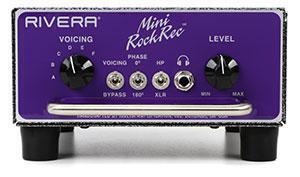 Guitar Amp — There are now many great solutions for giving your guitar signal great tone when going direct into your audio interface. When I recorded my new EP, Foundation, I used a Rivera Mini RockRec, which is an analog speaker emulator and load box. It let me use my “big” tube amps for direct recording. A killer alternative would be the Universal Audio OX. My Rivera, Fender, Friedman, and other amps sound great going into the Apollo Twin direct through the Mini RockRec, and I often can’t resist using one of those for “real” tone when practicing. Lately, I’ve been experimenting with the incredible Hughes & Kettner Black Spirit 200, which features H&K’s Red Box speaker emulation, built-in effects, four different channel voicings, and Bluetooth control from an iPad app. There are many other amps out there now that feature built-in speaker emulation. If you go this route, make sure that the amp you choose can operate without a speaker load connected or that your speaker emulator provides a speaker load. (Both the Mini RockRec and the OX provide a suitable load to keep your amp safe.) A Kemper Profiling Amp or Positive Grid BIAS Head, or a Line 6 Helix, can also give you great results direct into your interface. There are tons of options!For perhaps the most compact solution, the super-tiny little 50-watt Vox MV50 Clean amp has a great “American” clean tone, and even has Vox’s authentic-sounding Nutube technology. And it’s small enough to fit in a computer bag. Plus, you can route it straight into your interface with natural-sounding and -feeling speaker emulation. I like to use this as the clean tonal “front end” for my guitar signal, because it takes pedals well, which is essential when I’m using a looper. Which brings me to…
Guitar Amp — There are now many great solutions for giving your guitar signal great tone when going direct into your audio interface. When I recorded my new EP, Foundation, I used a Rivera Mini RockRec, which is an analog speaker emulator and load box. It let me use my “big” tube amps for direct recording. A killer alternative would be the Universal Audio OX. My Rivera, Fender, Friedman, and other amps sound great going into the Apollo Twin direct through the Mini RockRec, and I often can’t resist using one of those for “real” tone when practicing. Lately, I’ve been experimenting with the incredible Hughes & Kettner Black Spirit 200, which features H&K’s Red Box speaker emulation, built-in effects, four different channel voicings, and Bluetooth control from an iPad app. There are many other amps out there now that feature built-in speaker emulation. If you go this route, make sure that the amp you choose can operate without a speaker load connected or that your speaker emulator provides a speaker load. (Both the Mini RockRec and the OX provide a suitable load to keep your amp safe.) A Kemper Profiling Amp or Positive Grid BIAS Head, or a Line 6 Helix, can also give you great results direct into your interface. There are tons of options!For perhaps the most compact solution, the super-tiny little 50-watt Vox MV50 Clean amp has a great “American” clean tone, and even has Vox’s authentic-sounding Nutube technology. And it’s small enough to fit in a computer bag. Plus, you can route it straight into your interface with natural-sounding and -feeling speaker emulation. I like to use this as the clean tonal “front end” for my guitar signal, because it takes pedals well, which is essential when I’m using a looper. Which brings me to…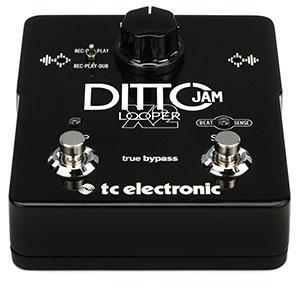 TC Electronic Ditto Jam X2 — I like to have a looper pedal so I can record quick loops and play along with them. It’s great for laying down a chord progression then practicing along with it. The beauty of the TC Ditto Jam X2 looper pedal is that it will speed up and slow down in response to an external tempo! Truly amazing. So you can record your chord progression loop, slow it down to practice at an easier tempo, then speed it up as you get better. I plug the output from my iPad into the pedal’s tempo input and use a metronome app to set the tempo for the loop. I’ll say it again: truly amazing!
TC Electronic Ditto Jam X2 — I like to have a looper pedal so I can record quick loops and play along with them. It’s great for laying down a chord progression then practicing along with it. The beauty of the TC Ditto Jam X2 looper pedal is that it will speed up and slow down in response to an external tempo! Truly amazing. So you can record your chord progression loop, slow it down to practice at an easier tempo, then speed it up as you get better. I plug the output from my iPad into the pedal’s tempo input and use a metronome app to set the tempo for the loop. I’ll say it again: truly amazing!- Strymon Riverside — When you use a looper pedal, your overdrive or distortion needs to come before the looper; otherwise, whatever loops you record will also be distorted and can turn into a fuzzy mess. I like the Strymon Riverside for three reasons: (1) It sounds great. (2) It’s versatile, covering tones from light overdrive to high gain. (3) I can store a “Favorite” setting and recall it with a button press.
- MXR Carbon Copy Deluxe — The original Carbon Copy is a great-sounding, easy-to-use analog delay pedal. The Deluxe version adds a number of features, including tap tempo, which I find essential. As with overdrive, I want the delay to happen before the looper, so the loops don’t get messy with the same delay as my lead sound.
- TC Electronic PolyTune 3 — You can tune the guitar just fine using either a clip-on tuner or a computer/phone app. But since I’m running a few pedals anyway, I’ve included a pedal tuner — it’s always there and convenient.
To keep the whole thing neat and clean — and prewired for instant access — I have my four pedals on a tiny pedalboard with a Truetone 1 Spot power supply.
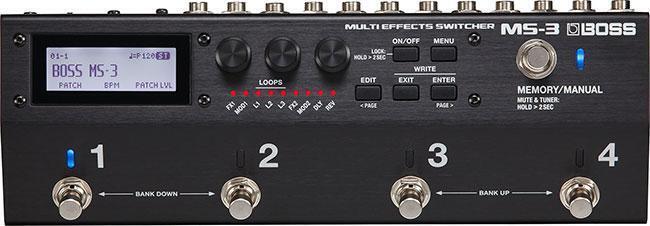
I’ve considered using an alternative to keep things even simpler: a compact multi-effects, such as the BOSS MS-3 or Line 6 HX Effects. A multi-effects processor would provide an incredible number of effects and tones, along with a built-in tuner, for a compact all-in-one solution that can also store presets for different sounds — and even fewer cables required.
Obviously, there are any number of solutions to getting your tone direct into the interface — probably as many solutions as there are players! And keep in mind that interfaces such as the Apollo Twin offer their own great amp plug-ins, so you may not need or want an external amplifier.
Software
As mentioned above, the Universal Audio UAD Console app is the most essential ingredient in this whole thing. The Console has “virtual” channels, which can accept the output from your other audio apps, whether a DAW, a backing track player, a metronome, a synth, or whatever, and blend it with the incoming signal from your guitar. This is what lets you play along with, say, a backing track, and have both come out of the speakers without any latency. The signal from your app or browser shows up in virtual channels in the Console software, so you can balance its volume against your guitar level.
- Metronome — I prefer to use the PolyNome app on my iPad. But there are many computer-based metronome apps as well. None of them are very expensive, so try a few out and choose the one that does what you want. One I like is Metronome X, which is free, with a paid upgrade that allows for saving and recalling presets. It has some of the same functionality as PolyNome, though it’s not as versatile or powerful.
- Transcribing — I use Anytune, which allows you to slow down audio files, loop sections, mark different places in a song, and much, much more. Another great option is Transcribe, which provides similar capabilities. I often use Anytune for playing along with audio backing tracks and for learning songs for my bands as well, so I can change the tempo or even retune or shift to a different pitch. Very useful software!
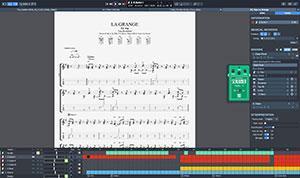 Notation — A lot of players use Arobas Guitar Pro, which is dedicated to guitar notation and tab, so it’s super easy and fast. I’m just getting started using it, and I like it a lot. I also use Avid Sibelius and PreSonus Notion for bigger projects. Other great options include MakeMusic Finale and Steinberg Dorico.
Notation — A lot of players use Arobas Guitar Pro, which is dedicated to guitar notation and tab, so it’s super easy and fast. I’m just getting started using it, and I like it a lot. I also use Avid Sibelius and PreSonus Notion for bigger projects. Other great options include MakeMusic Finale and Steinberg Dorico.
- Making backing tracks — The king of backing track creation, in my opinion, is Band-in-a-Box (BIAB). It can do everything from country to jazz to metal, with a huge array of instruments and options. There is a great selection of songs and BIAB tracks available for free on the web, so you don’t even have to make your own.
- Capture ideas, practice sessions, and licks — During your practice sessions, it can be useful to record yourself, both so you can analyze your playing later and to preserve licks and song ideas for future use. Pretty much any DAW will work for this; I use Avid Pro Tools and PreSonus Studio One as my DAWs; I’ve also used MOTU Digital Performer and Steinberg Cubase extensively. They all work great!
Add-ons
There are so many useful tools for the practice room. The trick is to not overload yourself with gadgets and software, which can distract you from actually practicing. I’ve found these “extras” to be useful.
- Amp Emulation — Dedicated software such as iK Multimedia AmpliTube can provide even more options for great tones, as well as built-in practice tools, such as a tuner, metronome, audio file playback, and much more.
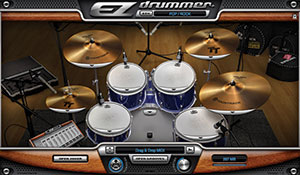 Drum Machine — Practicing with a metronome is fine, but working with a “real” drum beat can be even better. I like Toontrack EZdrummer for this application.
Drum Machine — Practicing with a metronome is fine, but working with a “real” drum beat can be even better. I like Toontrack EZdrummer for this application.- Music Playback — I use iTunes to play back tracks from my huge music library for listening and as a repository for the songs I’m working on. Normally, iTunes would feed out of the computer speakers or headphone jack, but I route it through the virtual channels in the UAD Console, just like I do all the rest of my “practice” software, so I can play along easily and with no latency.
- MIDI Keyboard — A compact MIDI keyboard can be useful in the practice room. Sometimes it’s just easier to see how things lay out on a keyboard than it is on a guitar neck. A keyboard can also be useful for playing in parts for drum machine software, playing into a DAW, controlling a virtual synth, or entering music into a notation program. I use the little CME Xkey, which is about as small and simple as you can get!
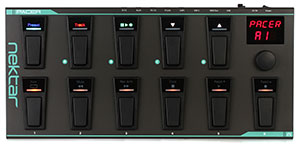 Remote Controller — A Bluetooth page turner or a footpedal for controlling your software can help keep your hands on your guitar instead of on your computer mouse or keyboard. I use a Bluetooth AirTurn Duo for page turning sheet music and tabs, and I’ve started incorporating a USB Nektar Pacer for more advanced DAW foot control.
Remote Controller — A Bluetooth page turner or a footpedal for controlling your software can help keep your hands on your guitar instead of on your computer mouse or keyboard. I use a Bluetooth AirTurn Duo for page turning sheet music and tabs, and I’ve started incorporating a USB Nektar Pacer for more advanced DAW foot control.
Get to Work
While we’ve talked about a lot of things in this article, the heart of the whole thing is the computer, paired with the Universal Audio Apollo Twin and its companion UAD Console app. With those two items, a few pieces of essential software, and a pair of headphones or monitors, I can be practicing in seconds. Adding a looper pedal is a great addition for practicing. And as a guitarist, my tone is my voice, so I enjoy incorporating an amp or emulator and some effects as well.
Beyond those essentials, the sky is the limit. I’ll caution you to avoid falling into the trap of using gear and software as an excuse for not practicing or as a procrastination device. It’s easy to do! Choose the items you need to get started practicing, and add additional hardware and software as you see an opportunity to make things easier, better, or faster.


